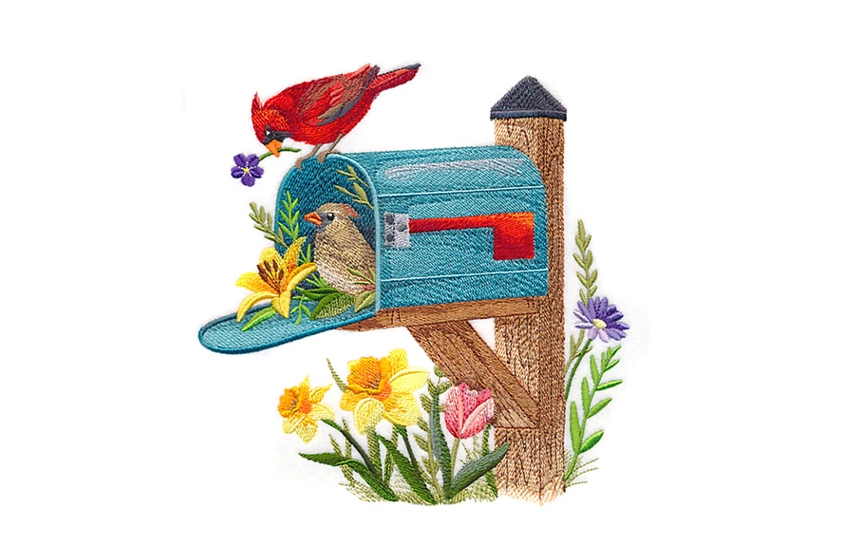Designs Used
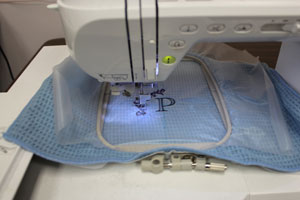
Microfiber is a synthetic material made of superfine fibers -- finer even than human hair or silk. It's also super-fine to embroider on, as you will see below!
Microfiber towels, most commonly a combination of polyester and nylon, are widely available at retail stores. They are known for their softness, and their ability to hold their shape.
They can also absorb a great deal of liquid -- some microfiber material can hold up to eight times its weight in water, making microfiber towels very handy to have around the house!
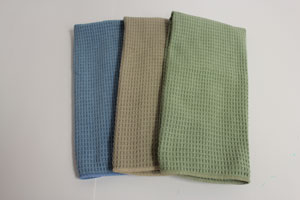
Nap and Patterns
All microfiber towels have some amount of nap, or fuzziness, and some also have a waffle weave, lines, or other patterns.
The deeper the nap or the more complex the weave, the more important stabilizer, topping and design choice become.
Microfiber is prone to shrinking, so wash and dry the fabric or item before embroidering on it.
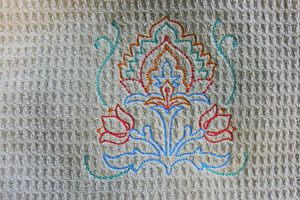
Stabilizer
Most microfiber towels are a polyester/nylon blend, making them a little stretchy. Choose a medium-weight cutaway stabilizer to give the embroidery stitches the stable base they need. Cutaway stabilizer will also help the embroidery stay good-looking through multiple washings -- especially important for towels.
When working with stretchy fabrics, like microfiber, steer clear of tear-away stabilizer. Tear-away stabilizer is designed to "tear away" quickly after embroidering. But the needle perforations actually begin to disintegrate the stabilizer during embroidery, leaving nothing behind to support the fabric. That means that the fabric is free to stretch and warp as the hoop moves, resulting in skewed and misplaced stitching. For best results, use cutaway stabilizer.
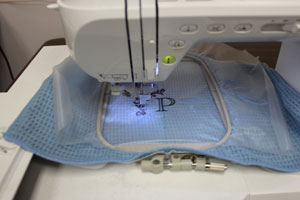
Topping
I mentioned earlier that microfiber towels have a certain amount of nap to them, and some have weaves and patterns in the fabric, as well. To keep your stitches from sinking into the nap, use a topping.
Topping is something added to the top of the fabric (usually a water-soluble stabilizer -- I used Sulky Ultra Solvy for this tutorial) to prevent the stitches from sinking into the fabric.

Stitch Support
I embroidered the Heritage Thistle design with cutaway stabilizer and topping, and then again without topping. The design embroidered with topping (shown left) is nice and crisp, and the stitches are not sinking into the fabric.
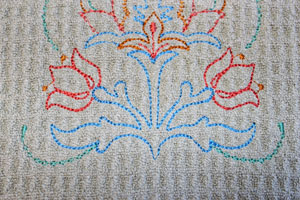
The photo on the left shows the design when it's stitched without a topping. Notice how some of the stitches are getting lost in the fabric. The result is a less crisp stitchout. The support of topping will keep the stitches looking sharp.
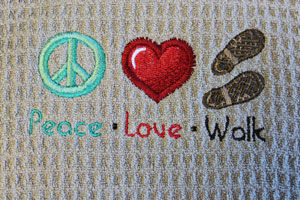
Design Choice
Small to medium-size designs with solid fills, such as the Peace Love Walk design, are a good choice for microfiber. Redwork and linework may get lost in the texture. If you do choose a lighter design, be sure to use a topping to keep the stitches from sinking into the fabric.
Needle Choice
For most projects, my preference is sharp needles, as they keep the stitches very crisp. For my microfiber samples, I used a 75/11 sharp sewing needle. Either an embroidery needle or a sharp sewing needle will be fine on microfiber. If you notice that your stitches are a bit fuzzy and not quite as defined as you'd like, then try a sharp sewing needle instead.


